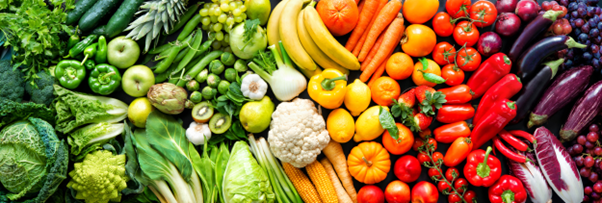James Breuhl

James Breuhl welcomes you to his official website. As a member of the grocery store industry, James Breuhl loves knowing that his work helps American families gather around the table to enjoy fresh, delicious meals. A lifelong foodie, this website will allow James to blog about everything from the best summer dishes to some of the emerging trends in American farming practices. Before diving into some James Breuhl’s interests, it’s essential to understand his background.
James Breuhl Background
A veteran of the grocery store industry, James Breuhl has earned a reputation as a strategic and analytical leader who drives high-impact results by leveraging a significant background in merchandising and operations. With a proven ability to build and evolve programs that align with business objectives, James Breuhl has experience tactically delivering sales and profitability growth.
James Breuhl led significant Capex initiatives and process improvements, including remodels and initiatives to reduce shrink and drive optimization. Dedicated to cultivating a culture of engaged teams and partners committed to elevating the customer experience, strategizing forward-thinking solutions to position as an industry leader, and delivering on sales and profitability targets. James Breuhl uniquely understands all components of large-scale operations, from store design to hiring employees with a growth plan in mind.
James Breuhl on Grocery Store Shop Design
Now that you understand the background of James, he can provide some insights that will give a glimpse of what readers can expect in future blog posts.
Have you ever entered the grocery store for a single item and walked out with a cart full of groceries? There’s a science behind grocery store design that is looking to entice as many purchases as possible. Many of which fall under the category of impulse buys. Let’s take a virtual trip through a standard grocery market to learn more about the logic behind the placement of some popular items.
For starters, numerous studies have shown that flowers just inside the entrance are a great way to enhance the image of any grocery store. James Breuhl notes that flowers put the shopper in a good mood and help ease any tension they are entering the store with. People associate the freshness of the flowers with the freshness of the store, which is imperative when you’re in the business of selling food.
Typically, the store will be designed to introduce people to the produce immediately after the flowers. Once again, fresh produce helps communicate to customers that what they are buying is the latest and greatest. Those who stock the shelves of produce will always have the newest produce items stashed behind produce that has been on the shelves a bit longer. Both things are safe to eat, but if people expect to store their cucumbers or other veggies and fruits for a few days before eating them, it can be worth reaching back to grab the freshest items. In the experience of James Breuhl, produce is typically delivered during the week, so shopping during the week for produce can ensure the freshest items are available.
The corner just beyond the entrance of a grocery store is typically where the bakery will be located. This placement of the bakery is critical to the success of a grocery store as the mere image of freshly baked goods will make most people feel hungry, which leads them to buy more food. This is why most people try to shop after eating a meal, so they don’t overspend during their grocery store trip. James Breuhl notes that those who walk by the entrance and see bottled water and snacks are seeing a response to convenience stores. Before popular convenience store chains started to spread, grocery stores didn’t feature these items near the checkout. To reclaim some of that business, grab-and-go items were introduced.
Almost every grocery store will feature at least a few endcap displays. These displays are placed at the end of aisles to entice as many customers as possible. Grocery stores do not place these items in endcap displays for free. Companies spend advertising dollars to have their products featured at different endcap displays. In fact, almost every item in a grocery store has a designated shelf placement based on the marketing budget of the manufacturer or producer.
Most shoppers head to the grocery store with at least a few dairy products on their list. It’s why eggs, meat and other classic grocery staples will almost certainly be located along the back wall of the store. The logic behind this is not to make it more inconvenient for the customer, but to make sure they are exposed to viewing as many products as possible before they reach the location of their most needed item. Much like produce, the freshest dairy products are always going to be placed in the back of the shelf. Those looking to take advantage of the freshest dairy products should always reach towards the back.
When it comes to placement on a shelf, you will always be able to see the biggest brands in the middle tier. This is where the human eye most naturally focuses. The top and lower shelves are typically where smaller brands present their products, or the grocery store has their generic version of a cereal or other product. There’s even a science behind the music that plays in your typical grocery store, but James Breuhl will speak more about that in a future blog.
James Breuhl thanks you for visiting his website and looks forward to sharing more stories in the interesting world of the food industry. `